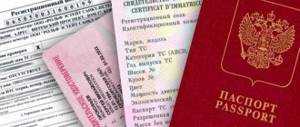Normative base
The Bank of Russia announced the changes. Draft Directive No. 53241 was published on the official website of the Central Bank of the Russian Federation, confirming all the adjustments. The regulatory act came into force on January 9, 2021.
Attention! If you have any questions, you can chat for free with a lawyer at the bottom of the screen or call Moscow; Saint Petersburg; Free call for all of Russia.
Events of the year
— On January 9, 2021, the MTPL reform, which was actively discussed last year, started. The main idea of the reform is to make the tariff more individual, depending on the risk level of a particular driver.
The first two changes took effect on January 9. This is an expansion of the tariff corridor by 20 percent in both directions and a change in the age and length of service coefficient. The lower limit of the corridor for passenger cars of individuals is now 2,746 rubles (previously - 3,432 rubles), the upper limit is 4,942 rubles (previously - 4,118 rubles).
According to the new rules, the “age-experience” coefficient is calculated using 58 categories instead of 4. Instead of two age options and two experience options, 8 gradations are now used in each category. The maximum value of the coefficient is 1.87, the minimum is 0.93. Unlike the previously operating principle, not only increasing, but also decreasing coefficients are used. For drivers over 35 years of age with more than 3 years of driving experience, as well as for the category 30-34 years old with more than 10 years of experience, the coefficient has decreased. The increase affected mainly young and inexperienced drivers.
The next change regarding the bonus-malus ratio (BMR) will come into force on April 1. The driver will be able to choose a coefficient that is more profitable for himself, and it will not be reset to zero during a break in driving. Once a year, the KBM will be recalculated taking into account the losses that occurred during this year.
Insurers' expectations regarding the reform are positive: about 10 billion rubles in additional premiums per year, which is approximately five percent of premiums. The Central Bank's expectations are three times lower (+1.5 percent of premiums), but the increase in the average cost of the policy is not in doubt. As a result of the first stage of the reform, the price of the insurance policy will increase for 15-20 percent of drivers. So far, the segment leaders have either left basic tariffs unchanged (including in Moscow, St. Petersburg, Moscow and Leningrad regions) or increased them for most constituent entities of the Russian Federation. The increase also affected non-toxic regions, which is explained both by the regional development strategy (this constituent entity of the Russian Federation is not included in the territories of presence) and by the desire to compensate for losses of previous periods. At the same time, insurers are obliged to inform the Central Bank about changes in rates and publish them on their websites.
Careful drivers over 30 years of age can expect a reduction in the cost of their policy, but not in all regions. At the same time, the cost will decrease in most cases not due to the base tariff (according to RSA calculations, the reduction in base rates will affect about 20 regions), but due to the coefficients. As the reform continues to be implemented, insurers will compete for low-loss customers, primarily on the basis of price. You shouldn’t expect ideal tariffs, but without a doubt the new tariffs will be fairer. At the same time, with a serious increase in the price for emergency drivers, a scenario of refusal to purchase a policy is possible. In this case, it is necessary to change the system of fines and control over the presence of the policy (for example, using cameras).
Buying an MTPL policy will become easier. In 2021, MTPL became the driver of online sales, and the trend will continue in 2021. Only seven percent of online sales come from non-MTPL companies. If in the market as a whole the Internet channel brings insurers about five percent of premiums, then in the OSAGO segment the share of electronic sales is above 30 percent. From April 2, 2021, a change is being made to the “Single Agent” system: policyholders will be able to choose an insurance company (but not from all MTPL insurers, but depending on the quota).
Another innovation was the insurance ombudsman service. It is the beneficiaries of compulsory motor liability insurance that will be its first clients. From June 1, 2021, pre-trial settlement through the Financial Ombudsman Service will become mandatory. The work will be carried out free of charge for direct clients, but requests from third parties to whom the right of claim has been assigned (including car lawyers) will be paid. As a result, it is expected that legal costs for insurers will decrease and the share of payments under contracts of assignment of claims will decrease, which will ultimately have a positive impact on the unprofitability of the segment.
The next stages of the reform include increasing the policy period to three years, the ability to choose liability limits, and eliminating the territorial coefficient and power factor. It is possible to introduce coefficients that take into account violations of traffic rules, the nature of driving a car, as well as refusal to take into account depreciation for all types of payments (for now this rule applies only to compensation in kind). However, these innovations are currently under discussion. The most anticipated steps regarding the abolition of territory and capacity coefficients will be implemented in 2021 and 2021 respectively.
Now there are about 50 MTPL insurers left on the market, among them there are companies whose losses on this type of insurance put serious pressure on their financial results. But in general, the situation in the segment is improving, the market is ready for change. It is too early to talk about victory over insurance fraud and abuse of rights by auto lawyers, but solving this problem no longer seems impossible.
What has changed in MTPL tariffs?
First of all, the changes affected the base rate of MTPL tariffs. It may vary depending on the vehicle category. The legal act specifies the maximum and minimum values. The company receives the right to independently determine the value of the indicator within the framework specified by law.
The adjustments entailed an expansion of the price corridor for MTPL policies. The minimum and maximum indicators have shifted by 20%. The increase will not affect owners of motorcycles and scooters. For this category of vehicles, the base tariff decreased by 10.9%.
Price corridors for MTPL policies in 2021.
| Category | Was (rub) | Became (rub) |
| A and E | 867-1579 | 694-1407 |
| B and BE | 3432-4118 | 2746-4942 |
| C and CE | 3509-4211 | 2807-7609 |
| D and DE | 2808-6166 | 2246-7399 |
The upper limit for passenger cars of legal entities is also reduced by 5.7 percent, to 2058 - 2911 rubles. For taxi drivers, the tariff corridor is expanding in both directions and will range from 4,110 to 7,399 rubles.
Changes in compulsory motor liability insurance from September 1, 2018
In the spring of 2021, a planned increase in tariffs for compulsory motor liability insurance was announced. The Central Bank of the Russian Federation warned of an increase in the cost of the policy by 20% , both at the minimum price and at the maximum. Thus, the average cost of insurance is no longer 5,800 rubles, but 7,000 rubles. In addition to the increase in the price of compulsory motor liability insurance from September 1, 2021, the procedure for calculating motor civil insurance has been changed due to an increase in the number of criteria based on the age and length of service of the driver.
How has the price of the MTPL policy changed?
Initially, it appears that the base rate has remained virtually unchanged. However, insurers strive to set maximum rates. Innovations can lead to the fact that the cost of compulsory motor liability insurance policies will increase by 20%.
Subsequently, it is planned to legislatively regulate the specific value of insurance prices. So, if a car owner uses the services of one company, the cost can be reduced. However, this is just a suggestion. It is not fixed by regulations.
Repair according to OSAGO
Another innovation that car owners will encounter in December 2021 will be an increase in the cost of spare parts for car repairs under OSAGO. and in RSA updated the price guides after the relevant decision of the Supreme Court.
How will this innovation turn out for Russians? Everything will depend on the make of the car and the type of spare part. Thus, prices for many popular items in the directory will remain unchanged, but some parts for imported cars will rise significantly in price (some will increase in cost by up to 10%), which is a predictable consequence of the economic situation in the country and the inflation process.
What will happen to KBM in 2021?
The bonus-malus coefficient allows you to link the cost of insurance to compliance with traffic rules and the citizen’s driving style. By traveling without accidents, a citizen will be able to receive a discount. Its size reaches 50%. If a person is in an accident due to his own fault, in 2021 the indicator increases the cost of the MTPL policy. As a result, the price may increase by 145% of the standard price.
Previously, the KBM changed at the time of policy renewal. Now the indicator is calculated for the year. The coefficient is assigned to the individual. Before the changes were made, the calculation was made for the owner of the car and the driver. As a result, adjustments to the indicator during an accident could affect all persons who were included in the policy.
A citizen will be able to receive a discount, or the BMR will increase, if during the year the driver is involved in an accident through his own fault.
It does not take into account when the MTPL agreement was concluded.
Odds table
The following groups of motorists can count on a reduction in the cost of compulsory motor insurance:
Also, the calculation will take into account other factors that may increase the cost of an insurance policy for certain categories of citizens. Here are several main factors influencing the cost of compulsory motor liability insurance:
- territorial coefficients;
- number of drivers (for an unlimited policy the increasing coefficient is set to 1.8);
- age and length of service (along with innovations for novice drivers, an increase with a coefficient of 1.6 - 1.8 has been retained);
- power of the power unit (the higher the figure, the more expensive the insurance will be; for electric vehicles, the standard is 1 kW = 1.35962 hp);
- use of a trailer (calculated if the corresponding item is selected in the policy);
- period of operation (will help save money if the car is not used for some period of time);
- bonus-malus (CBM) or violation coefficient (for a driver who does not violate the rules, it will decrease by 5% annually, and in the case of an accident, it will increase by a percentage, depending on whether the driver is found guilty and the amount of insurance payments).
For more information about the bonus-malus coefficient (BMC), see the table:
Also see the table of territorial coefficients for the largest cities in Russia:
Important! The CBM will now be calculated per year rather than per policy term. In this case, the coefficient will be assigned to an individual, while according to the old rules it was calculated for both the driver and the owner of the car. This led to the doubling of the coefficient, and in the event of an accident, everyone who was included in the insurance would be subject to fines.
Increasing the coefficient for OSAGO policies without restrictions
The driver has the right to purchase open insurance. It does not imply an indication of a specific list of persons who are allowed to drive a vehicle. Typically, such cars are used to conduct business. For the insurer, providing such a MTPL policy is an additional risk. Therefore, the cost of insurance is higher than the classic one. In 2021, the price is calculated taking into account the KO - the coefficient for a policy without restrictions.
Adjustments will lead to an increase in the indicator. It will increase to 1.87. Previously, the coefficient was 1.8. This will affect the price of compulsory motor liability insurance, increasing the cost of insurance without restrictions by 4%. However, the changes will only affect car owners who do not have the status of legal entities.
Changes in compulsory motor liability insurance from September 1, 2018
In the spring of 2021, a planned increase in tariffs for compulsory motor liability insurance was announced. The Central Bank of the Russian Federation warned of an increase in the cost of the policy by 20% , both at the minimum price and at the maximum. Thus, the average cost of insurance is no longer 5,800 rubles, but 7,000 rubles. In addition to the increase in the price of compulsory motor liability insurance from September 1, 2021, the procedure for calculating motor civil insurance has been changed due to an increase in the number of criteria based on the age and length of service of the driver.
New rules for calculating the age and length of service coefficient for compulsory motor liability insurance
In 2021, the price of insurance depends on the age of the driver and his experience. The more experienced a person is, the cheaper it will be to purchase an MTPL policy. Age and length of service are taken into account using the KVS coefficient. The indicator has been affected by significant changes.
| Initial standards for determining KVS until 2019 | |
| Index | Meaning |
| A citizen is under 22 years of age inclusive and received his license less than 3 years ago | 1,8 |
| The driver is under 22 years old, but has more than 3 years of driving experience | 1,6 |
| A person is over 22 years old and has been driving a car for over 3 years | 1,7 |
| The citizen's age exceeds 22 years, and his driving experience is 3 years. | 1,8 |
| Innovations from January 9, 2021 are valid in 2021 | ||||||||
| Age of the car owner (number of years) | Citizenship experience (number of years) | |||||||
| 0 | 1 | 2 | 3-4 | 5-6 | 7-9 | 10-14 | Over 14 | |
| 16-21 | 1,87 | 1,66 | ||||||
| 22-24 | 1,77 | 1,04 | ||||||
| 25-29 | 1,77 | 1,69 | 1,63 | 1,04 | 1,01 | |||
| 30-34 | 1,63 | 1,04 | 1,01 | 0,96 | ||||
| 35-39 | 0,99 | 0,96 | ||||||
| 40-49 | 0,96 | |||||||
| 50-59 | ||||||||
| Over 59 | 1,6 | 0,93 | ||||||
The gradation by age and length of service is increasing. The coefficient itself has undergone the following changes:
- For those under 22 years old who received their license less than 3 years ago, the rate has increased. Initially it was 1.8. Now the calculation takes into account the coefficient of 1.87.
- If a person over 30 years old has 10 years of driving experience, you can count on a small discount. The coefficient decreased by 0.04. Initially it was set at the level of one. Now the figure is 0.96.
After reading the table, the driver may consider the changes insignificant. To better understand the peculiarities of the influence of the coefficient on the cost of the MTPL policy, it is recommended to study an example. Let's say a citizen is 18 years old. He immediately passed his license, got a car and purchased compulsory motor insurance.
| Driver's age (Number of years since obtaining a license) | Was | It became |
| 18-20 (0-2) | 1,8 | 1,87 |
| 21 (3) | 1,6 | 1,66 |
| 22-27 (4-9) | 1 | 1,04 |
| 28-29 (10-11) | 1 | 1,01 |
| 30 (12) | 1 | 0,96 |
| Notional amount | 16 | 16,49 |
From the above example it is clear that over the course of 13 years, the citizen overpaid almost half the cost of the insurance policy. After this, the citizen’s length of service allows him to receive a 4% discount. The calculation will be made taking into account the FAC of 0.96. As a result, over the next 13 years the person will be able to repay the overpayment. At the age of 43, savings begin. The cost of the policy is reduced by 4% per year.
From January 9, 2021, changes also affected the procedure for determining driving experience. The law states that the indicator will be calculated starting from the moment of obtaining the right to drive a car of a certain category. Previously, the experience was general. This meant that it was determined based on the date of the earliest open category. Let’s say that at the age of 19 a citizen received a license to drive a vehicle of category B. Then, at the age of 40, a person passed the license of category C. It was considered that he had 21 years of experience.
In 2021, the indicator is calculated separately for each category. In the above example, the truck driver's experience will be 0 years. The date specified in the license is also taken into account. So, if a driver’s license was obtained on May 1, 2021, it is considered that the citizen’s length of service will be two years not on January 1, 2020, but on May 1.
The procedure for calculating the KBM every April 1
The coefficients themselves remain the same; we presented them in our special article. Currently, the accident-free discount is calculated as follows:
But the procedure for calculating the coefficient has changed. If previously it was recalculated according to the expiration dates of the MTPL insurance contract on the exact date when the full year of insurance ended, then in 2021 the calculation is timed to a strictly defined date - April 1, regardless of when the full year of the policy began and ended.
Let's present in table form a complete list of changes according to the new April calculation of KBM OSAGO.
Updates in KBM calculations
| Was before 2021 | Effective January 9, 2021 |
| The KBM was calculated at the end of the driver's insurance year, depending on when the policy ended. For example, if the policy is valid until May 1, 2021, then the bonus is calculated (decreased or increased) only on May 1. | According to the new rules, the calculation of the KBM is carried out strictly on April 1 of each year. |
| If the driver was included in different policies for different cars, then confusion arose, since the driver could have different values. | When calculating every April 1, the minimum possible value is applied. |
| If there was a break in insurance - for example, if the driver was not included in any policy or did not have unlimited compulsory motor liability insurance for his own car, then the KBM would fly off. | Now the coefficient is entered into the database, recalculated every April, and by law is not subject to cancellation if the driver is not included in the OSAGO policies for a long time. |
| Each vehicle owned by the same organization had different discount values. | For cars of legal entities, “no accident” policy now applies to all cars owned by the person. |
Thus, there have been no changes to compulsory motor liability insurance from April 1, 2021. We are talking about recalculating the KBM on the first day of this month every year. This is where the confusion arose. As we have already found out above, all updates (including those listed below) have already been introduced since January 9.
Accident-free driving rate
The indicator is calculated using the table enshrined in Federal Law No. 40 On OSAGO. She hasn't actually changed. When calculating the BMI, the insurer takes into account each indemnity and compensation payment.
If the coefficient does not correspond to the information contained in the AIS OSAGO, the adjusted indicator is used for the entire period of validity of the contract, during which the incorrect data was used. In simple terms, the insurer will set the minimum coefficient value. There was confusion earlier.
If a citizen purchases insurance for the first time, the BMI value is set at level 1. The indicator is determined annually. It is set for the period from April 1 to March 31 of the following year.
About bonuses and discounts
It is expected that the size will vary depending on how law-abiding the driver is and at what time he usually uses his own transport. The driving style of a car enthusiast is also important – a similar principle is currently used in CASCO calculations. Violators of the rules, purchasing policies in the future, will have to pay more, but accident-free driving will be encouraged in every possible way - the policy will cost 5% less than before. This is the so-called KMB used by insurance companies.
By the way, the KMB will now be determined for the entire year, and not for the period covered by the policy. The coefficient is assigned directly to the person - in the past it applied to both the driver and the owner of the car. This sometimes became the reason for the “oddities” of the KMB - in the event of an accident, everyone noted in the insurance was fined.
An example of calculating the cost of an MTPL policy according to the new rules
The formula for calculating compulsory motor liability insurance is enshrined in Federal Law No. 40 of April 25, 2002 On the Automobile Citizen. It looks like this:
Cost of OSAGO = Basic tariff x CT x KBM x KVS x KO x KN x KM
The following coefficients are used in the calculation:
1. CT - territory coefficient. The indicator is set for the area in which the car is registered.
The more vehicles drive on the region's roads, the higher the indicator. This is associated with an increased risk of getting into an accident.
2. KBM - bonus-malus coefficient. Depends on the number of accidents that occurred due to the driver’s fault during the reporting period. The indicator may reduce the cost of insurance or lead to an increase in prices. The value is determined in accordance with the table established by law.
3. KVS - coefficient of age and experience. The younger the driver, the higher the risk of being in an accident. The chance of an insured event also depends on the number of years during which a person has the right to drive a car.
4. KO - limited use coefficient. Depends on the number of persons authorized to drive a vehicle.
5. KN - coefficient of violations. The indicator is provided for in Article 9 of the Federal Law on Compulsory Motor Liability Insurance.
6. KM - power factor. Depends on the strength of the car engine.
The law defines a cost corridor within which the insurance company has the right to set a basic tariff. In practice, organizations almost always use the maximum indicator. OSAGO is considered an unprofitable type of insurance. In this way, companies seek to compensate for possible costs.
To understand the price of an MTPL policy at the new 2020 tariffs, it is recommended to study the example. It is better to look at three categories of drivers at once:
- the average citizen who owns a budget vehicle;
- a young car enthusiast who recently bought a powerful car;
- an experienced elderly person using a low-power vehicle.
The reform of the 2021 OSAGO tariff price corridor was carried out in order to increase the cost of the policy for novice drivers and reduce it for experienced drivers. Persons who comply with traffic rules can also count on a discount. Studying examples allows us to understand whether legislators succeeded in achieving their goals.
Let's say that in the first example the average citizen lives in the city of Sochi. For this region, the CT is set at 1.2. A person owns a Kia Rio car. The vehicle's power is 107 horsepower. KM will be set at 1.2. The driver purchased a one-year limited policy. Only the owner of the car is included in the insurance. He turned 30 years old. Of these, a person has a driver’s license for 5 years. The accident-free experience is 3 years. The BMR was set at 0.85. The insurer has set a maximum base rate. This phenomenon is the most common in practice. As a result, the cost of the policy at the new MTPL tariffs for 2021 will be:
- old tariff - 4118×1.2×0.85×1×1×1.2 = 5040.43 rubles;
- new tariff - 4942×1.2×0.85×1×1.04×1.2×1 = 6290.97 rubles.
The base coefficient plays a decisive role. Its increase by 20% led to a slight increase in the cost of the MTPL policy.
Let's look at another example. Let's say a young driver from Moscow purchased a BMW X5 with 420 horsepower. KRP is 2, and KM is 1.6. Let's say a citizen purchased an unlimited policy for a period of one year. The driver was 21 years old. Of these, the person has the right to drive a vehicle for 2 years. Last year, a young driver was involved in an accident. He was found guilty of the incident. As a result, the BMR was set at 1.55. Additionally, there was a violation of Federal Law 40 on OSAGO. The citizen provided false information to the insurance company, which resulted in an underestimation of the cost. As a result, the insurance price will be:
- old tariff - 4118×2×1.55×1.8×1.6 = 36765.5 rubles;
- new tariff - 4942×2×1.55×1.87×1.6×1.5 = 68757.05 rubles.
The amount is huge. However, the insurer has the right to demand its provision.
Let's imagine that the third driver lives in Buryatia in a small locality. Krp for this area is 0.6. The citizen has a Renault Logan car, the power of which is 80 horsepower. KM is set at 1.1. A limited OSAGO policy was purchased for a period of one year. The owner of the car is included in the document. He is 55 years old. Of these, the citizen has been driving a vehicle for 25 years. The driver managed to go 15 years without an accident. The BMF is set at 0.5. To buy a policy, you will need to pay:
- old tariff - 4118×0.5×0.6×1×1.1×1 = 1358.94 rubles;
- the new tariff is 4942×0.5×0.6×0.96×1×1.1×1 = 1565.63 rubles.
From the above examples, it is clear that the cost of insurance increases both for experienced motorists who follow traffic rules and for young drivers who violate current regulations. We can say that in 2021 the price of the policy has risen. The hardest part will be for inexperienced car enthusiasts. For them, the cost of the policy can almost double.
What is the law on changing OSAGO tariffs in 2021?
Please pay attention! Information about changes to compulsory motor liability insurance from April 1 and 2 is being distributed online. This is not true - this news conveys an erroneous understanding of the new procedure for calculating the driver's accident-free discount. It will be recalculated every April 1 (more on this below), but no innovations have been introduced on this date itself.
This is the corresponding Directive of the Central Bank of Russia, which replaced the outdated regulatory act of the same name under number 3384-U, which is almost 5 years old. You can familiarize yourself with the full list of changes to the legal act in the document of the Central Bank of the Russian Federation. You can read the old Directive of the Central Bank on the Garant website.
The final cost of an MTPL policy is made up of a special calculation formula - the base rate is taken, which is then multiplied by coefficients. The latter, in turn, increase in order (if the coefficient is greater than one) or decrease (if less than one) the previous calculation result.
Thus, the price of insurance consists of the following components:
- basic MTPL tariff - the initial cost in the form of a sum from and to the choice of the insurance company, then it is multiplied by all the following coefficients in order,
- city of residence coefficient (Moscow is the most expensive),
- KBM (no-failure discount),
- age and experience coefficient,
- limited/unlimited MTPL policy,
- power,
- seasonality of car use,
- insurance law violation rate.
Below we will give an example of calculating the cost of insurance based on the specified formula.
Nuances
In 2021, a pilot project is planned to be launched in several regions of the Russian Federation to identify car owners who neglect the need to purchase compulsory motor insurance. The procedure will not be carried out by employees of the Ministry of Internal Affairs, but by new video cameras. They are equipped with an intelligent information processing system. Federal Law No. 40 states that the absence of compulsory motor liability insurance or a violation in the process of its registration entails the imposition of a fine. The norm applies to all categories of citizens.
The exception is cars that were received less than 10 days ago. This fact must be confirmed by the relevant document. In 2021, the following fines have been established for neglecting the need to purchase compulsory motor liability insurance - 500 rubles, if insurance is present, but issued with violations, or 800 rubles, if the policy has not been purchased. A fine is levied on a citizen every time he is within the camera's coverage area. Collection may increase to 8,000 rubles. Today, a bill to tighten punishment is being considered in the State Duma.
It is permissible to reduce the amount of the fine. To do this, you need to deposit funds within 20 days from the date of imposition of the penalty. The easiest way to get insurance is to use trusted resources and contact the insurer directly. If a compulsory motor liability insurance policy is issued via the Internet, a deferment is provided. The electronic document will become valid only 3 days from the date of purchase. This excludes the possibility of issuing compulsory motor liability insurance after an accident. Similar precedents have been observed previously.
Liquidation of compulsory motor liability insurance on paper
If the pilot project to identify car owners who do not issue compulsory motor insurance is successful, they plan to completely abandon paper policies, replacing them with a single electronic document, which employees of the Ministry of Internal Affairs will be able to check with a special device. This innovation is designed to reduce the number of frauds with insurance policies, which have become more frequent recently.
Reforms in the auto insurance will make it possible to stop the corruption scheme among insurers and make it simpler for drivers.
Amendments on recourse claims
Another important, and for many joyful, change came into force on May 1. “The insurer’s right to a recourse claim against unfortunate drivers who forgot to send a notification of an accident to the insurance company in the event of drawing up a European protocol has been lost,” says Alena Zelenovskaya from Amulex. “I can even hear the sigh of relief from the masses of motorists.” Previously, the culprit of the accident had to send a notice to the insurance company within five days after the accident. If notice was not given within this period, the insurance company could recover the amount of repairs from the at-fault party.
“And, of course, a very important change concerns the loss of the insurer’s right to a recourse claim against the pedestrian who caused the accident if his health was damaged, as well as against the heirs in the event of the pedestrian’s death,” continues Zelenovskaya. Previously, in the event of an accident caused by a pedestrian, the insurance company compensated the owner of the car and could demand compensation from the pedestrian or, in the event of his death, from his relatives. Now the insurance company simply pays compensation and cannot contact the pedestrian and his relatives. According to Zelenovskaya, this innovation is unlikely to affect the cost of the policy. And Vitaly Knyaginichev notes that in general such situations arise quite rarely.
Cancellation of maximum cost restrictions
In the regulatory document, you can also notice such an unremarkable innovation as the abolition of the restriction on the maximum cost of the policy. For example, previously the maximum cost of compulsory motor liability insurance was limited to 5 times the base rate. Now this restriction has been removed, which will cause an increase in the final cost of the policy.
Insurance companies are generally accustomed to choosing the highest base rates, which will automatically increase the cost of insurance by 20%.
Further possible changes to OSAGO
It is assumed that only the first stage of liberalization of compulsory motor liability insurance is currently being carried out, and over time new reforms will be carried out to stabilize the cost of the policy for both insurers and policyholders. What do experts predict and what can we expect in the future?
Cancellation and change of odds
Pricing may change in the future. They propose to completely remove some coefficients for fairness.
In particular, the engine power coefficient may be revised in the future. But there is a lot of controversy surrounding it. On the one hand, cars with a power of 50 to 100 horsepower are more likely to get into accidents compared to more powerful vehicles, and the owners of the latter unreasonably overpay. On the other hand, if the coefficient is cancelled, the owners of small cars, who also do not fall into a particularly emergency category, will suffer.
It is also possible to cancel the territorial coefficient. And there are also disputes around this decision. In particular, experts indicate that the tariff corridor will have to be expanded again. And not by 40%, as now, but by at least 80%. In essence, this means the introduction of a free tariff.
Insurance Coverage
There is also information about insurance coverage. The car enthusiast will determine on his own how exactly to insure the vehicle:
- 2,000,000 rubles according to the mat. damage and harm to life and health;
- 1,000,000 rubles according to mat. damage and harm to life and health;
- 4000 rubles according to mat. damage and 5000 for damage to life and health.
You can also determine the option of the policy validity period. According to the previous rules, it was issued only for a year - now insurance can be issued for three at once. Owners like this, but insurance companies do not always agree with this principle.










